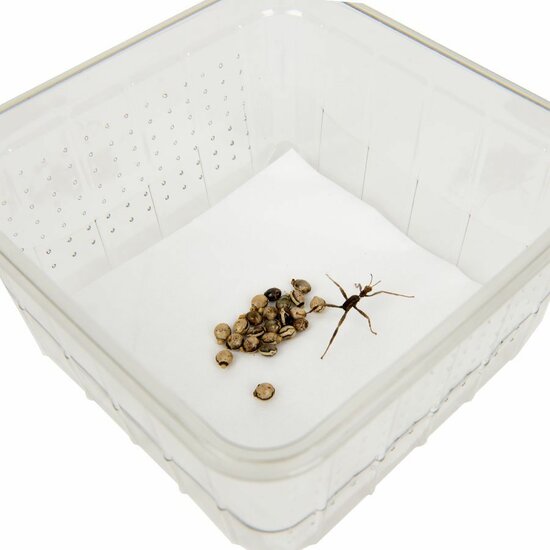
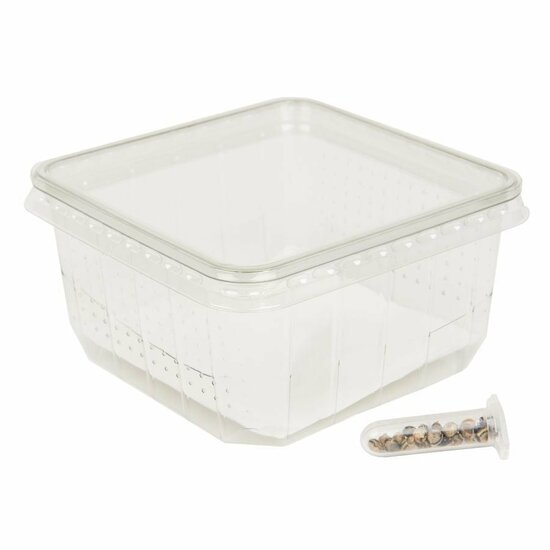
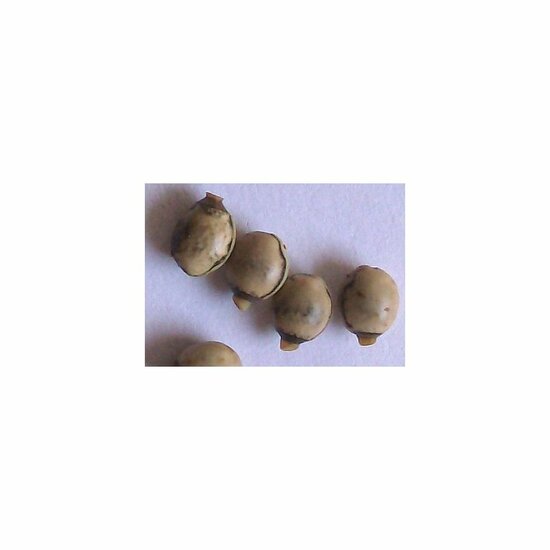
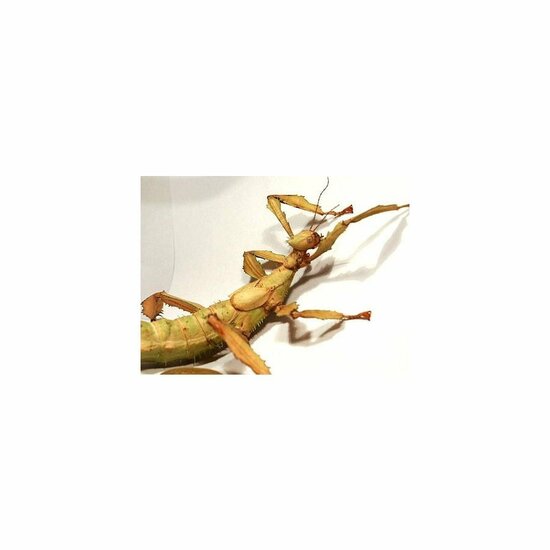
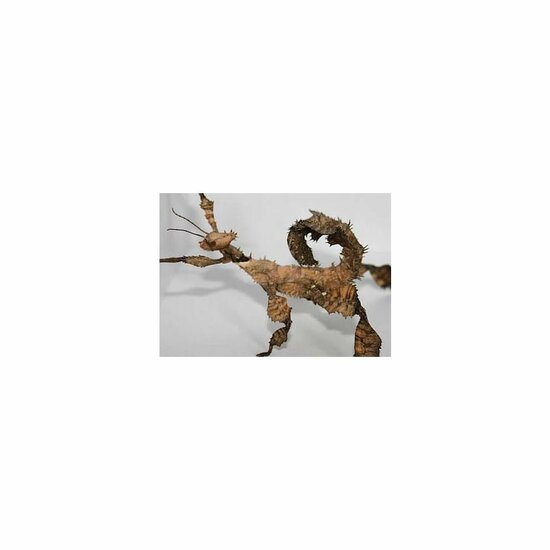
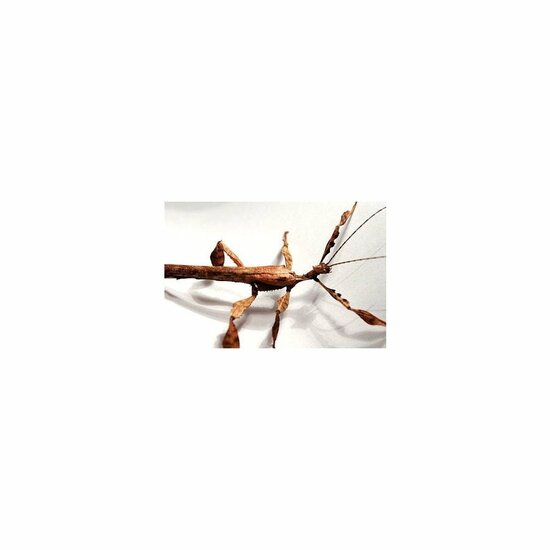






- Ants as pets since 2009 It starts here!
- We ship every working day until 4:30 PM
- Flat shipping costs from €6.99
- Specialists in ants, free advice
Do you have questions about this product?
Or do you need help? Please feel free to contact us, we are happy to help!
Product description
PSG 9 eggs Australian flap branch
Egg breeding kit psg9
Order your breeding kit psg9 here, a breeding container with approximately 15 eggs of the special Australian stick insect. These eggs have been fertilized in recent months, we pack eggs of different ages so that eggs can hatch over a longer period of time. Since the care and conditions are important for the hatching of the eggs, we cannot give any guarantees on the hatching of the eggs.
The eggs hatch in varying periods of 2 to 9 months once a male has fertilized the female. We only offer fertilized eggs. Store the eggs on a damp piece of paper. This should always remain moist but not really wet. Preferably store the eggs at 25°C. Beware of mold!
Extatosoma tiaratum is also called Australian flap branch. The species has also been given a PSG number, namely PSG 9. E. tiaratum occurs naturally in Australia; and New Guinea.
Popular
This is a very popular stick insect species, because of its unusual shapes and size. Read on to learn more about caring for this stick insect.
Appearance
This species actually looks more like a cactus than a branch or leaf. They have distinctive spines and protuberances on their legs. They are often brown colored, and very occasionally green variants of this species can also be found.
What is striking is the big difference between males and females. The females are thick, spiny and up to 15 cm long. The males are narrow with long wings, few spines and a length of about 12 to 13 cm.
Behaviour
This type of stick insect exhibits very special behavior. As a defense, the females and nymphs imitate a scorpion! By curling the tail upwards they resemble poisonous scorpions. Predators who see this are shocked and do not dare to take the risk of attacking a potential scorpion. The harmless stick insect gets away with bluffing with its tail!
Furthermore, this is a quiet animal. Because most stick insects are nocturnal, they will not show much movement during the day. However, in the evening you can see them moving and eating.
Food
This species eats blackberry, raspberry, oak, rose, hazel and eucalyptus leaves. Bramble leaves can always be found in winter.
Beware of store bought rose bushes, they are always sprayed with insecticides! Eucalyptus is often unsprayed, but to be sure you should always check with the store.
Environmental requirements
The temperature may vary between 20 °C and 30 °C. Room temperature is fine for these animals.
This species does not make high demands on humidity. They should have some water to drink if necessary, and the humidity may also be a little higher before molting. Ventilation is important. We recommend spraying the accommodation approximately twice a week.
As with all stick insect species, this species requires an enclosure that is at least 3x the animal's length high, and at least 2x the animal's length wide. For an adult female this means at least 45 cm high and 30 cm wide.
When the females become very large and heavy, it becomes difficult for them to climb glass. It is better for your animal if you ensure that she can also climb up a rough surface or branch. They often hang upside down.
Reproduction
The males and females are easy to distinguish from each other. Females are thicker and wider and have many spines, while males are narrower with fewer spines. When they reach adulthood, the males are very different from the females. They then have wings and are very narrow. They also have very long antennae.
This species can reproduce parthenogenetically or sexually. You can simply keep the males and females together in a cage. The eggs are round brown balls. They can be distinguished from poop because they are much rounder and shiny, and they do not fall apart when you rub them gently.
PSG 9 eggs Australian flap branch
Egg breeding kit psg9
Order your breeding kit psg9 here, a breeding container with approximately 15 eggs of the special Australian stick insect. These eggs have been fertilized in recent months, we pack eggs of different ages so that eggs can hatch over a longer period of time. Since the care and conditions are important for the hatching of the eggs, we cannot give any guarantees on the hatching of the eggs.
The eggs hatch in varying periods of 2 to 9 months once a male has fertilized the female. We only offer fertilized eggs. Store the eggs on a damp piece of paper. This should always remain moist but not really wet. Preferably store the eggs at 25°C. Beware of mold!
Extatosoma tiaratum is also called Australian flap branch. The species has also been given a PSG number, namely PSG 9. E. tiaratum occurs naturally in Australia; and New Guinea.
Popular
This is a very popular stick insect species, because of its unusual shapes and size. Read on to learn more about caring for this stick insect.
Appearance
This species actually looks more like a cactus than a branch or leaf. They have distinctive spines and protuberances on their legs. They are often brown colored, and very occasionally green variants of this species can also be found.
What is striking is the big difference between males and females. The females are thick, spiny and up to 15 cm long. The males are narrow with long wings, few spines and a length of about 12 to 13 cm.
Behaviour
This type of stick insect exhibits very special behavior. As a defense, the females and nymphs imitate a scorpion! By curling the tail upwards they resemble poisonous scorpions. Predators who see this are shocked and do not dare to take the risk of attacking a potential scorpion. The harmless stick insect gets away with bluffing with its tail!
Furthermore, this is a quiet animal. Because most stick insects are nocturnal, they will not show much movement during the day. However, in the evening you can see them moving and eating.
Food
This species eats blackberry, raspberry, oak, rose, hazel and eucalyptus leaves. Bramble leaves can always be found in winter.
Beware of store bought rose bushes, they are always sprayed with insecticides! Eucalyptus is often unsprayed, but to be sure you should always check with the store.
Environmental requirements
The temperature may vary between 20 °C and 30 °C. Room temperature is fine for these animals.
This species does not make high demands on humidity. They should have some water to drink if necessary, and the humidity may also be a little higher before molting. Ventilation is important. We recommend spraying the accommodation approximately twice a week.
As with all stick insect species, this species requires an enclosure that is at least 3x the animal's length high, and at least 2x the animal's length wide. For an adult female this means at least 45 cm high and 30 cm wide.
When the females become very large and heavy, it becomes difficult for them to climb glass. It is better for your animal if you ensure that she can also climb up a rough surface or branch. They often hang upside down.
Reproduction
The males and females are easy to distinguish from each other. Females are thicker and wider and have many spines, while males are narrower with fewer spines. When they reach adulthood, the males are very different from the females. They then have wings and are very narrow. They also have very long antennae.
This species can reproduce parthenogenetically or sexually. You can simply keep the males and females together in a cage. The eggs are round brown balls. They can be distinguished from poop because they are much rounder and shiny, and they do not fall apart when you rub them gently.
Reviews
No reviews yet
More information...
If you have any questions, please don't hesitate to contact us, we like it! You can reach us via email and WhatsApp. You are welcome in the showroom by appointment for advice and purchase!
Customer service Make an appointment
